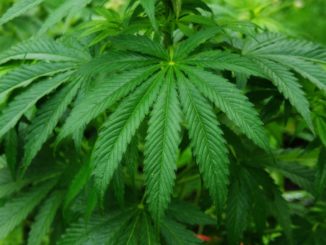 by Theresa Rose, edited by Libby James
by Theresa Rose, edited by Libby James
We all know marijuana has come a long way from the reefer madness hysteria of the 1930s, but who knew the formerly “evil weed” would be considered a safe and effective pain-killer? Highly versatile, cannabis provides relief for many different ailments and symptoms with a high degree of safety, according to Nishi Whitely of www.MyChronicRelief.com. The substance is so effective, it has become known for the treatment of such diseases as Parkinson’s and cancer.
I had a chance to observe the effects at close hand when a former employer and friend contracted Parkinson’s disease. A lively, smart and vibrant woman, she was walking with a shuffle, and leaning forward. If she was in a lot of pain, she didn’t let it show but it was becoming so difficult for her to do her job it was most likely one of the deciding factors when she and her husband sold their business. Over a year and a half after the sale, I ran into a mutual friend and I asked how my friend was doing. The friend said she was doing well, all due to (and she whispered this) “cannabinoids”.
At this year’s Christmas party, my former employer appeared every inch her old self. Her posture had improved, there was a spring in her step and any weight she’d gained due to inactivity was gone. As she darted round the house, pouring wine, showing off her talent for decorating and rounding up her dog, I heard the word “cannabinoids” passed from guest to guest. Apparently, many of them had also discovered the miracle medicine.
Parkinson’s affects certain nerve cells in the brain that produce the chemical, dopamine, that controls movement. When these cells break down, the body can no longer move normally; inaction and tremors are common. Over time the patient will lose control of more and more movement and bodily functions and be unable to perform simple tasks such as feeding themselves, dressing themselves or communicating their needs. There is no known cure.
In a research review, investigators from the Touro College of Pharmacy in New York City, found clinical evidence suggesting that cannabinoids may have therapeutic application for managing motor-related symptoms. Cannabinoids were found to bind directly with dopamine receptors in the brain, effectively reducing the motor control loss associated with of dropping dopamine levels.
The reasons cannabis benefits so many different illnesses and ailments is due to the fact that some of the active pharmacological components of the cannabis plant mimic an internal chemical harm reduction system in the human body that keeps our health in balance – the Endocannabinoid System (ECS).
The ECS is controlled by chemicals that our body produces called endocannabinoids. Our endocannabinoids are responsible for keeping our most critical biological functions in balance such as sleep, appetite, the immune system, pain and more. When the body gets out of balance and moves into a state of stress, endocannabinoids go to work to fix the problem. The pharmaceutically active components in the cannabis plant mimic endocannabinoids and so can be effective in helping the body manage crises and restore itself after trauma when the body is not able to restore balance by itself.
Working on the computer for long periods of time has left me with a degree of chronic pain that seemed to be insurmountable. A series of physical therapies, Ibuprofin and Gabapentin (specific for nerve pain), have been helpful but not enough to keep me working for more than a couple of hours at a time. Synthetic opiates, for me, are nauseating, constipating and ineffective. In experimenting with cannabinol oil, I’ve discovered a surprising amount of relief. I’m sometimes pain-free for days, depending upon my workload. Dosage varies for everyone. While it is recommended to take a full dropper, I’ve found it too much for me and that a 1/2 dropper with two Ibuprofin or one Gabapentin usually keeps me painfree for a day.
The cannabinoids are widely available in the city in a number of forms, from the pure oils, to the smokeable versions, topical ointments and thermal patches.
Sources: https://echoconnection.org/cannabinoids-help-treat-parkinsons-disease-research
http://mychronicrelief.com/cannibis-101-thc-cbd
Support Northern Colorado Journalism
Show your support for North Forty News by helping us produce more content. It's a kind and simple gesture that will help us continue to bring more content to you.
BONUS - Donors get a link in their receipt to sign up for our once-per-week instant text messaging alert. Get your e-copy of North Forty News the moment it is released!
Click to Donate




Long before the reefer madness hysteria of the 1930s, W. B. O’Shaughnessy brought Cannabis (aka “Indian Hemp”) into Western medicine. It was featured in the United States Pharmacopoeia from then up until Anslinger’s time. The “science” behind its removal from the U.S.P.? Put Anslinger+jazz+swing or “White men’s shadows” into your search engine of choice…